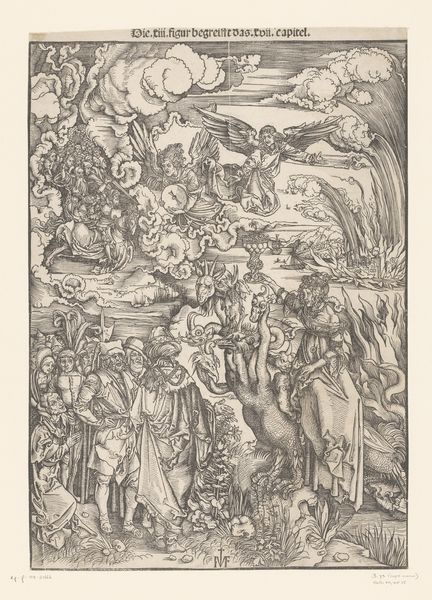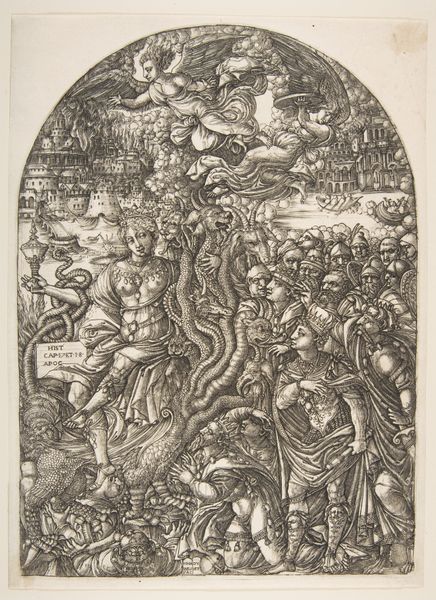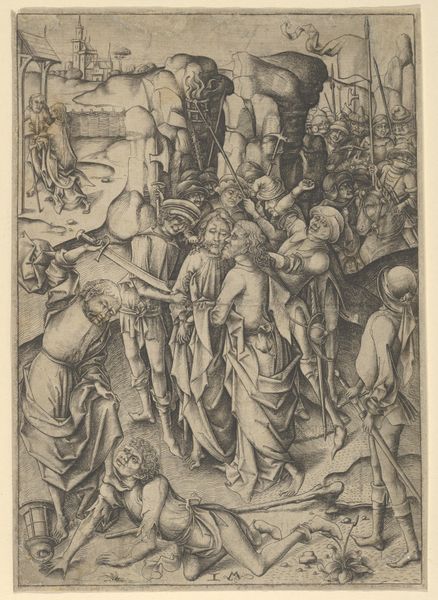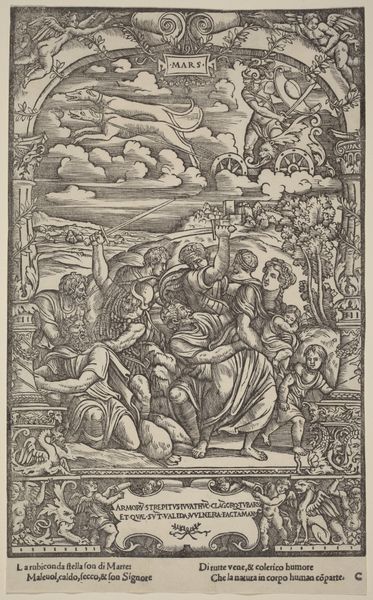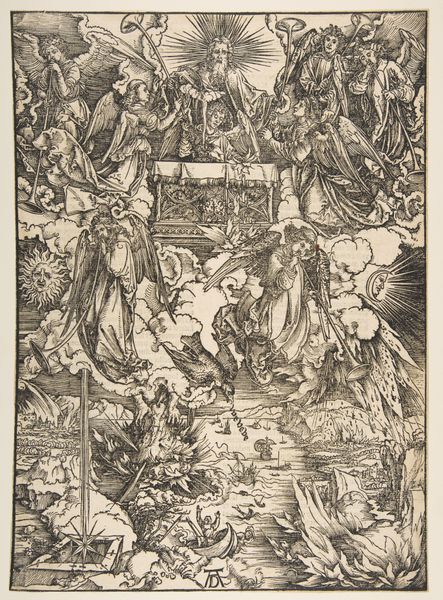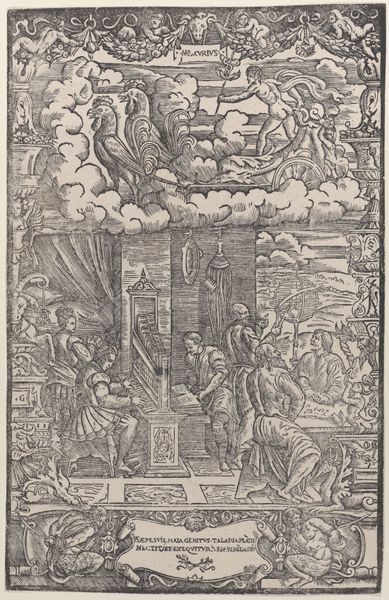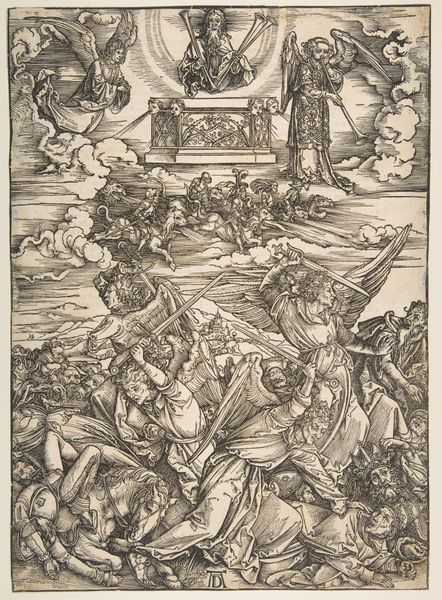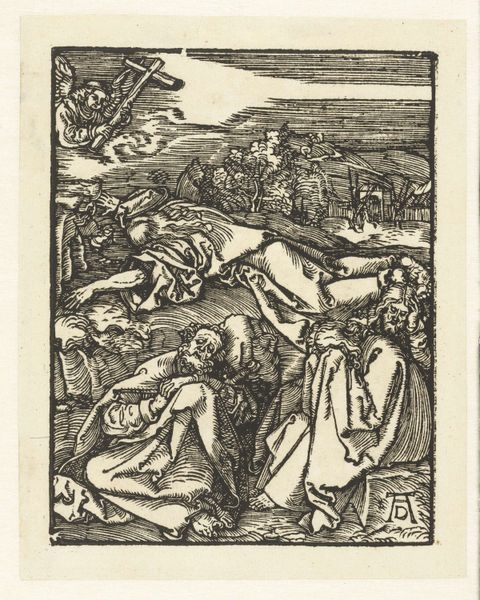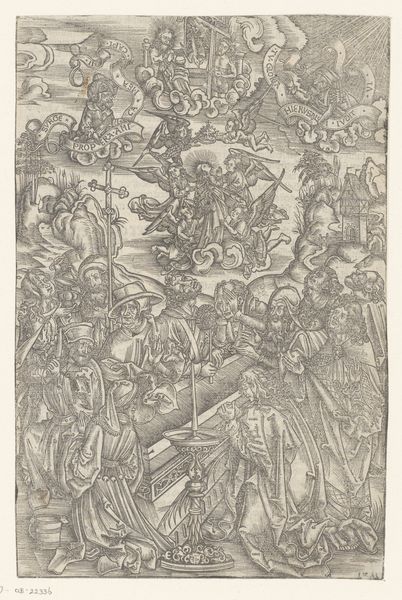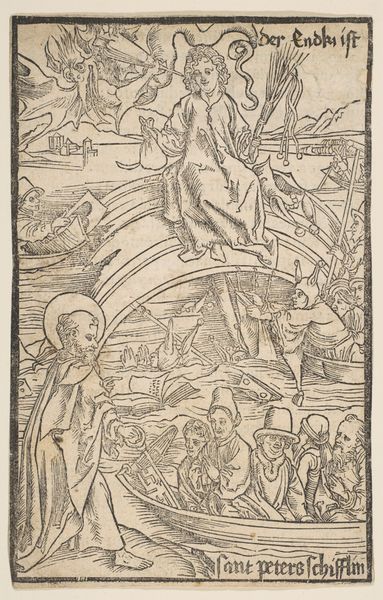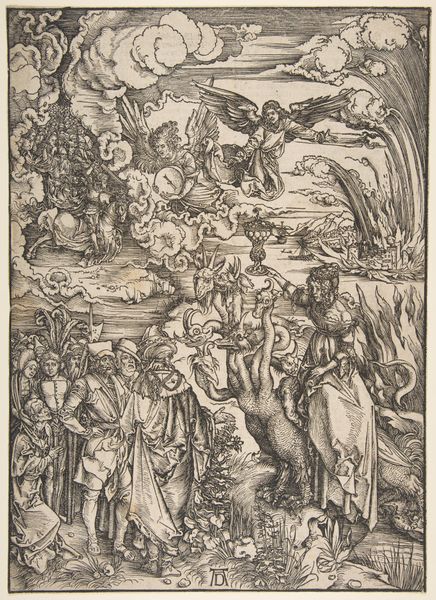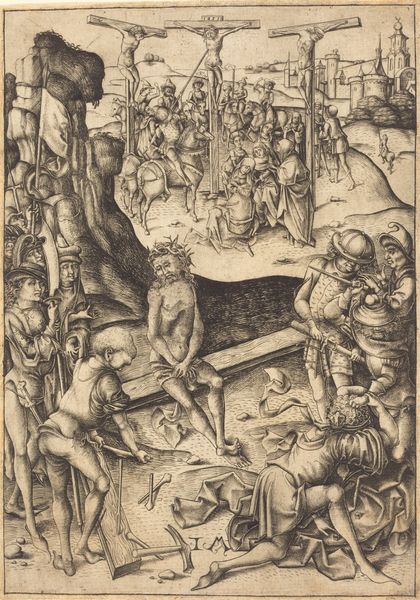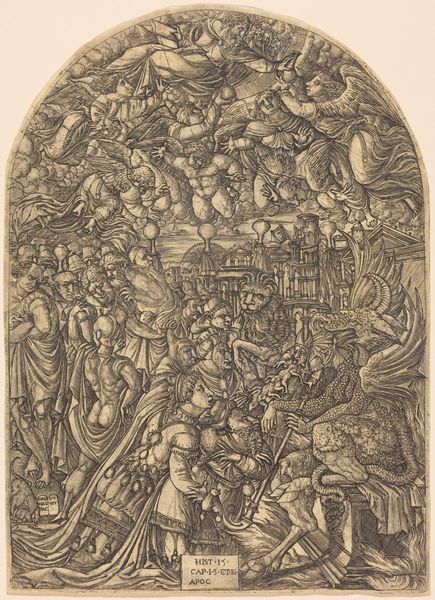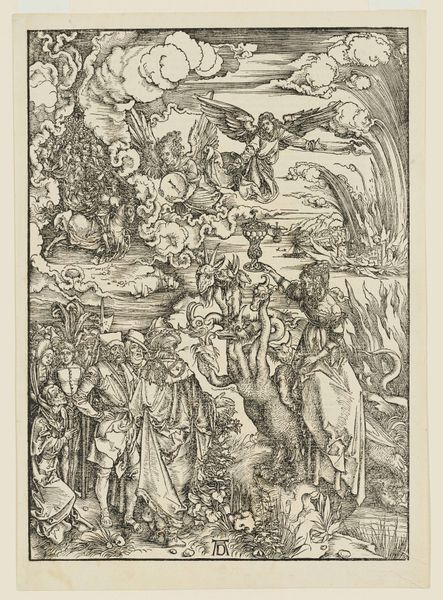
print, engraving
#
narrative-art
# print
#
figuration
#
history-painting
#
northern-renaissance
#
engraving
Dimensions: height 260 mm, width 190 mm
Copyright: Rijks Museum: Open Domain
Editor: Here we have “The Seven Sorrows of the Virgin” by Monogrammist S, dating from 1510 to 1530. It's a print, an engraving actually, and immediately I’m struck by its emotional intensity—it's so packed with grief and, well, sorrow. What catches your eye most when you look at this work? Curator: It’s interesting you pick up on that. What pulls me in, beyond the overt religious narrative, is the incredibly intricate composition, the way Monogrammist S layers space and action. Look how they orchestrate multiple scenes, each brimming with figures, almost like looking through fractured memories. How does the density affect you? Editor: It's a lot to take in, visually. It feels overwhelming, reflecting the sheer weight of the suffering depicted. It’s hard to know where to focus. Is this typical of Northern Renaissance prints? Curator: In some ways, yes. This period explored complex narratives, and printmaking allowed for that kind of dense storytelling to reach a wide audience. It was how ideas, faith, and yes, sorrow, spread. I'm wondering, can you pick out any specific details, any of the seven sorrows the title refers to? Do they leap out? Editor: Well, there’s Christ's crucifixion obviously. And is that his body being taken down in the foreground? The detail is incredible. It makes you feel almost present at such a painful moment. I see the crown of thorns, too... Curator: Precisely! Those details are meant to pierce the heart, wouldn't you say? Think of how powerfully symbolic images were during the time, each element carefully selected. For me, the personal impact lies in how it speaks to enduring human themes—loss, empathy, resilience even in the face of profound sadness. It resonates deeply, I feel, centuries later. What do you take away from seeing it? Editor: I think I appreciate how much narrative and emotion could be conveyed through just lines in an engraving. And I hadn't thought about the widespread impact prints could have back then. Thanks. Curator: My pleasure! Art history really does open up when we relate artworks to larger historical and cultural narratives.
Comments
No comments
Be the first to comment and join the conversation on the ultimate creative platform.
